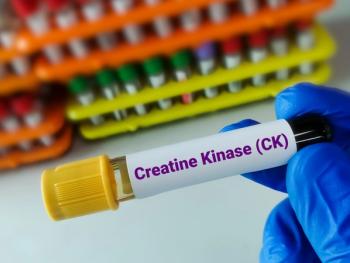
Customized PROMIS Assessment Can Track Upper-Limb Function in DMD
Investigators found that making a few changes to a common patient-reported outcomes assessment improved its validity in patients with Duchenne muscular dystrophy.
A new customized version of a common patient-reported outcomes instrument could make it easier to reliably assess upper-extremity function in children with Duchenne muscular dystrophy (DMD).
The new assessment, an adapted version of the Patient-Reported Outcomes Measurement Information System (PROMIS) Parent Proxy Physical Function-Upper Extremity (PROMIS PP UE) instrument, was
Corresponding author Linda Pax Lowes, PT, Ph.D., of Nationwide Children’s Hospital, and colleagues said loss of upper-limb function is a significant moment in the progression of DMD, sometimes occurring when the child is still ambulatory. For many patients, the loss of upper-limb function marks the moment when they can no longer independently perform routine daily tasks.
“This shift can significantly impact their overall quality of life and sense of autonomy,” they explained.
One key method of tracking such changes is through the use of patient- or caregiver-reported outcomes. Lowes and colleagues said patients and caregivers sometimes offer divergent responses on assessment instruments. However, they said the use of caregiver- or parent-reported instruments can be a particularly valuable way to track changes in diseases such as DMD that begin to manifest while patients are still young.
Duchenne muscular dystrophy is a rare and unique disease, and the investigators said the common tools used to track symptoms, such as loss of physical function, have not been thoroughly studied.
“While these measures offer standardized tools for the evaluation of outcomes, they require validation in a specific population of interest to ensure their relevance and accuracy,” they wrote.
In the new study, Lowes and colleagues sought to independently assess the psychometric validity of the PROMIS PP UE item bank in a DMD-specific context.
The investigators asked the caregivers of children with DMD who were at least 8 years old to complete the PROMIS PP UE assessment. Lowes and colleagues then used Rasch analysis—a method of validating psychometric measurements — to assess the utility of the tool.
A total of 206 PROMIS PP UE observations were utilized in the analysis, representing patients with a mean age of 12.4 years. Forty-one percent of the observations took place while the patient was still ambulatory. At the outset, the investigators excluded four PROMIS items from the Rasch assessment because they were considered irrelevant. For example, one of the items asked if the patient could independently tie his shoelaces; the investigators noted that most children with DMD do not wear shoes with laces.
That left 25 items in the item bank for Rasch analysis. However, Lowes and colleagues found that several of the items had weak clinical utility, and some of the items required restructuring to more precisely capture changes in upper-limb functionality in DMD. For instance, in some questions, the available response options for caregivers were irrelevant or were not understood clearly by caregivers.
In the end, the investigators came up with a customized list of 21 items, which Rasch analysis showed to have a good fit. In other words, the revised instrument appears to be a valid tool to assess upper extremity function and to differentiate between patients of varying levels of functionality. The exception, the authors said, is that the assessment performed less well in patients with the highest level of upper-limb functionality.
The investigators said the customized instrument will have “meaningful implications for both clinical practice and research.” In addition to tracking patients’ disease progression, they said patient- and caregiver-reported outcomes play a key role in demonstrating the impact of potential new therapies.
“The PROMIS PP UE measure may thus help to direct clinical care and enable proactive planning for the changing needs of children with DMD, in addition to serving as a sensitive measure facilitating therapeutic development in DMD,” they wrote.
Newsletter
Get the latest industry news, event updates, and more from Managed healthcare Executive.






















































